Traveller Letters: Why do female cabin crew wear such appalling outfits?
Each week Traveller publishes a selection of rants, raves and travel tips from our readers. See below on how you can contribute.
Frocky horror shows
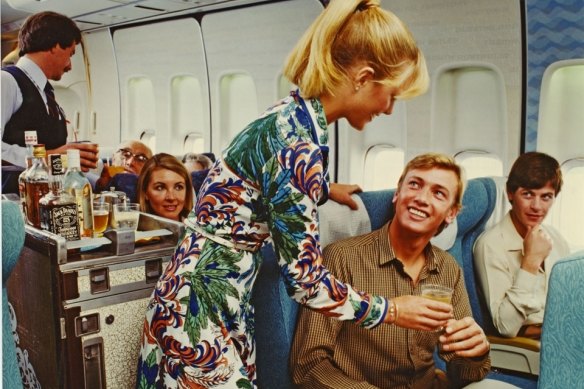
One reader found this 1970s Qantas flight attendant uniform appalling. Credit: Qantas
Why is it that female cabin crew, as pictured on your print edition’s cover (Traveller, August 24 – pictured above) have always been required to wear the most appalling looking uniforms while their male counterparts appear in plain tailored white shirts and black trousers? Some airlines provide appropriate uniforms – Singapore Airlines is certainly one of them – but many make female staff dress in clothes that no-one in their right mind would choose.
Clare Purbrick, Nagambie, Vic
Wholesale inhales
The golden age of travel actually involved yellow smoke stains on the bulkheads – I’ll gladly play aerial sardines now because the journey is smoke-free. In the 1970s and 80s the seating lottery didn’t matter as you always arrived smelling like an ashtray. Suffering from chronic bronchitis after every flight was an optional bonus. Sadly, there still isn’t a pause button for turbulence.
Romi Zerbini, Chatswood, NSW
The bucks stopped there
Having just read Brian Johnson’s story on the supposed golden age of travel, my wife and I reviewed the diary of our first big European trip in 1975. Our “go to” for the trip was Frommer’s Europe on $10 dollars a day. Frommer provided us with details of trains, hotels, restaurants, and off the beaten track gems including the best museums, the all-you-can-eat restaurant in Florence, and how to find the hotel in Athens where the street signs were all in Greek. Frommer was a great source of information and comfort for two novice travellers carrying all their possessions in seven kilogram (15 pound) backpacks.
Neil and Georgia Renfree, Hawker, ACT
Guiding light
Whilst many of Brian Johnston’s points in favour of overseas travel “now” as compared with “then” are reasonable enough, I would take issue with quite a few of them. Finding your way around with the help of a decent small map is not difficult if you’re used to it, and such maps contain museums and art galleries, for instance. Frommer’s Europe on $5 a day was not overly large to anyone with a decent-sized pack, and you could always rip out the pages relevant to your particular trip. Using Frommer, you could book a cheap pensione in advance and eat in cheap but excellent restaurants. It’s always wise, in any case, to do your homework on whatever country you happen to be visiting before you go (and that includes acquiring the rudiments of the language).
Rob Jackson, Cheltenham, NSW
Emissions creep
Thank you for your thoughtful trip down memory lane, comparing travel convenience “then” and “now”. I found one glaring omission in your account – global warming. Yes, modern aircraft are more fuel efficient, but on the other hand, there are a great many more of them in operation as prices have come down and travel has become more convenient. Overall, the contribution of aviation to climate change has very likely increased considerably. Many airline reviews now include information on the amount of greenhouse gas produced in the course of a flight. For example, you recently reported on the new Qantas route from Paris to Perth, which apparently produces five tonnes of greenhouse gas per business class passenger per round trip. How can anyone justify non-essential travel when it is so damaging to our collective future?
Gerard Sullivan, Camperdown, NSW
EDITOR’S NOTE Our reader’s point is taken, but, as Traveller’s Flight Path reviews usually indicate, airlines such as Qantas operate long-standing programs that do at least allow passengers to offset a portion of the flight emissions from their journeys.
Letter of the week: Lest we forget
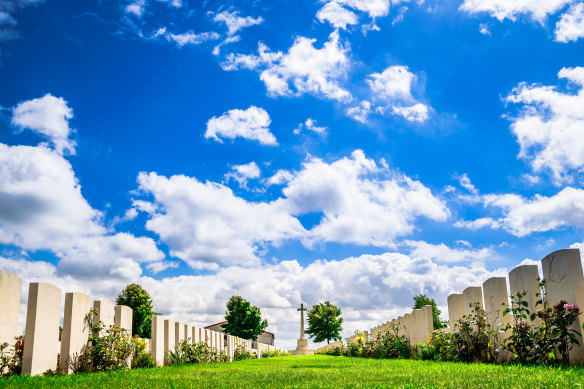
War graves in Ypres.Credit: iStock
Your article by Julietta Jameson on her great uncle Hubert (Traveller, April 25) brought back so many memories of trips I have made, especially to Ypres and northern France. First, my family was overwhelmed to visit my great uncle’s resting place in a manicured cemetery at Fleurbaix, France, next to a working dairy. At 18 he left Australia on the “adventure of his life”, only to be slain three weeks after disembarking at Marseilles, France.
Secondly, I travelled with a group of youngsters (11 to 16 years of age) who were shocked by the ages of the fallen at Passchendaele and Tyne Cot. For some, there was just a few years difference in age between them and those who died. The vast number of cemeteries dotted throughout the countryside is distressing and a stark reminder of the futility of war. The Commonwealth War Graves Commission has honoured those who served.
J. McKenna, Surrey Hills, Vic
Paper tiger
Our 2022 flight from Santiago de Compostela in Spain to Paris on budget line Vueling was delayed by six hours. They admitted it was their fault, and a long day was spent just sitting around staring at the flight board, hoping for a miracle. We arrived at night, in the rain, at Paris for a bus ride to the city. It was all just a bit unpleasant and tiring. I twice filled in the suggested forms for compensation and eventually received a reply saying “resolved” which I think is Vueling for “ignored”. It would be interesting to know just how many claims within the European Union are successful. Will Australia’s plans for better compensation for airline passengers, as recently outlined in the federal government’s Aviation White Paper, be better?
Tony Sullivan, Adamstown Heights, NSW
Grand designs
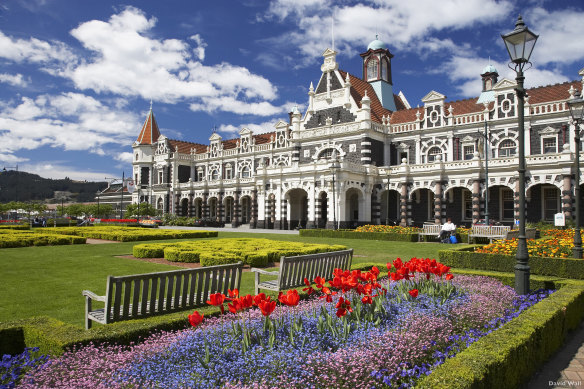
Dunedin’s historic “Gingerbread House”.
The stunning platform at Taormina-Giardini Station in Sicily (Traveller, August 24) is yet another example of quality of craftsmanship and design in many a railway station. There are countless examples in Australia of the magnificent architecture of buildings of an era long gone. Our visit to the South Island New Zealand city of Dunedin revealed the wonder of the restoration of its grand railway station, built in 1906. Known as the “Gingerbread House” it is a feast for the eyes.
Allan Gibson, Cherrybrook NSW
There’s a catch
Congratulations Lee Tulloch on your column on COVID-19 and travel (Traveller, August 17). I haven’t travelled on a plane for at least five years, but I know people who have caught COVID-19 on cruises, on planes and at airports. Today I checked the Victorian government website to see that in the week ending August 20 the average hospitalisation of COVID-19 sufferers was 112, with four in ICU. There were 134 deaths in the period July 10 to August 6 with economics writer Shane Wright recently pointing out that the cost to Australia of long COVID is $9.6 billion. Not something to be sneezed at.
Wilma Hills, Echuca, Vic
Tip of the week: Lyon taming
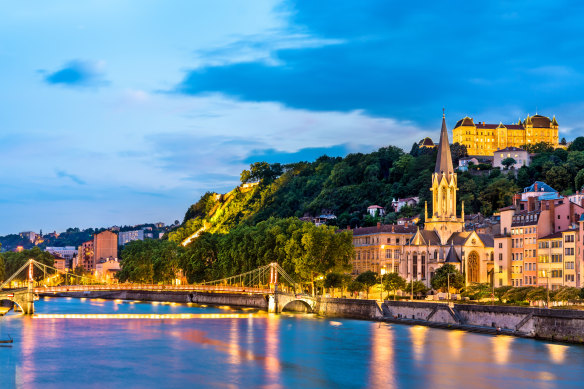
Lyon at sunset.Credit: iStock
Good suggestions for visits to Lyon given by your columnist Michael “The Tripologist” Gebicki (Traveller, August 31). May I add the wonderful Musee Lumiere, the home of modern film? It is easily accessible on the efficient metro and if you’re lucky, there’ll be a good food market in the plaza nearby. The Museum of Resistance was interesting but they had few ear pieces with English translation and we had to carry around a folder of information so book ahead or get there early. The Beaux Artes gallery is also well worth a visit and it has a nice little cafe and a terrace overlooking the courtyard.
Tony Sullivan, Adamstown Heights, NSW
…and in the Mean Time
Greenwich, London, a half hour ferry ride down the Thames from London Bridge, makes for a great urban escape in the British capital. When you arrive, walk up the hill to the highest point in the Royal Park and you will be rewarded with views of London city laid out at your feet. In the foreground is the 70-hectare park with its historic naval buildings, a palace, formal gardens and a majestic woodland. Towards the middle of the park is the Royal Observatory that maintains Greenwich Mean Time and a line that divides the Eastern and Western hemispheres. The old style English pubs in the village are a bonus.
Sandra Torpey, Hawthorn, Vic
Close encounters
In response to the letter by Kerrie Wehbe (“Harmful not harmless”, Traveller Letters, August 17), I applaud her concern about wildlife and the problematic interference of tourists in their lives. However such interference is more a case of poor management by tour companies, with drivers getting too close to the wildlife. Since my first safari to East Africa in the late 1960s (later leading tours in the 70s and 80s) I have seen a large decline in wildlife populations due to expanding human populations, habitat destruction, war, development, climate change, and poaching.
Until the western world decides to pump money into national parks and conservation efforts in Africa, then the only way these wildlife-rich areas will survive is for them to generate revenue for the poor countries to want to save them. Tourism is the way these places generate income for local people; it’s up to tourists to demand that tour companies abide by sustainable practices in wildlife viewing.
Robert David, Lilyfield, NSW
What’s going on?
A lesson learnt – I had no idea how many people rely on WhatsApp whilst travelling, including hoteliers, Airbnb hosts, transport and tour companies and everyone in between. We are older, experienced travellers and should have known better! We treated ourselves with a prearranged late night transfer from Athens Airport to Piraeus in May. Everything was confirmed by email, however when we went to the designated meeting point we were whisked away by an angry hotelier who said we couldn’t wait there.
I panicked as I didn’t have a clue how I’d recognise the driver or where to meet them. The operators at the 24/7 London helpline couldn’t tell us where to meet the driver, so we jumped into a taxi and headed off. Had I checked my WhatsApp messages, I’d have seen the driver was doing his absolute best to find us, but as I didn’t reply, he eventually headed home. So, always check your WhatsApp whilst overseas if expecting a message from anyone – be it family, friends or travel operators of all sorts.
Jenny Thomas, Bellawongarah, NSW
Storm born
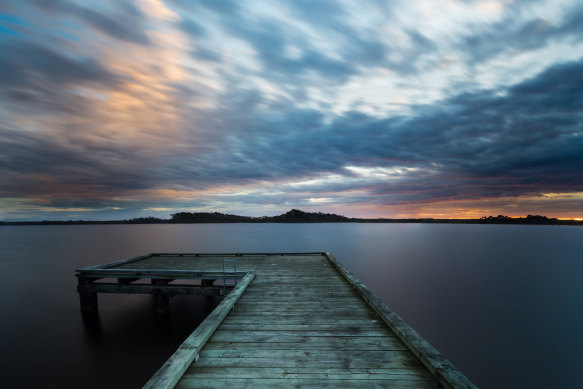
A wharf in Strahan and Morse Bay.Credit: iStock
When in Strahan, Tasmania, step on board the 20-metre Stormbreaker vessel and leave the picturesque town in your wake. Cruise across Macquarie Harbour and then along the Upper Gordon River, where you’ll moor overnight at Sir John Falls. Thankfully, this World Heritage area, home to magnificent huon pines, was fiercely defended in the 1980s to prevent the damming of the Gordon River and remains in its pristine state. With just 10 passengers on board, you’ll feel like the only people in the world as dinner is served up on deck under a star-studded sky. It’s so quiet, you can hear yourself think.
Roxanne Le Blanc, Croydon, Vic
The Letter of the Week writer wins three Hardie Grant travel books. See hardiegrant.com
The Tip of the Week writer wins a set of three Lonely Planet travel books. See shop.lonelyplanet.com
Sign up for the Traveller newsletter
The latest travel news, tips and inspiration delivered to your inbox. Sign up now.